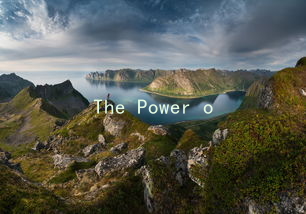Creating Connection: Emotional Storytelling Strategies for Meaningful Relationships
Creating Connection: Emotional Storytelling Strategies for Meaningful Relationships
In the realm of modern relationships, the art of communication is more crucial than ever. Emotional storytelling is a powerful tool that can deepen connections, foster intimacy, and create lasting bonds. By sharing our experiences and feelings in a compelling way, we invite others into our lives and encourage them to open up in return. Here are some effective strategies to enhance your storytelling and create meaningful connections in your romantic endeavors.
1. Know Your Audience
Before diving into your story, its essential to understand who you are sharing it with. Tailoring your narrative to your audience can make a significant difference. Consider their interests, values, and emotions. Are they sensitive to certain topics? Do they appreciate humor, or are they more serious? By recognizing the preferences of your partner or potential love interest, you can adjust your storytelling style to engage them effectively.
2. Use the Power of Vulnerability
Vulnerability is the cornerstone of deep emotional connection. Sharing personal stories that highlight your challenges, fears, and insecurities creates an atmosphere of openness and trust. When you reveal your authentic self, you encourage your partner to reciprocate. For instance, describing a time when you faced adversity can resonate with someone who has had similar experiences, sparking empathy and understanding. Remember, it’s in our moments of vulnerability that we often found profound connections.
3. Craft Relatable Narratives
Your stories should evoke emotions and be relatable to your audience. Use common experiences, like the excitement of a first date or the anxiety of meeting someone’s family. When listeners see themselves in your story, they are more likely to connect with you on a deeper emotional level. Incorporate specific details and sensory descriptions to bring your story to life. Instead of saying, I felt nervous, you could describe the way your heart raced and palms sweat as you approached your date.
4. Employ the Art of Active Listening

Storytelling is not just about sharing; it’s also about listening. Pay close attention to your partner’s reactions, both verbal and non-verbal, as you share your narrative. Engage them by asking questions related to what you’re saying. This not only shows that you value their input but also allows for a dynamic exchange of stories, leading to richer conversations. Creating a dialogue rather than a monologue fosters a deeper connection.
5. Use Humor Wisely
Laughter can be an excellent bridge in relationships. Incorporating humor into your stories can lighten the mood and make you more approachable. However, be mindful of your audience’s sensibilities. The goal is to create joy and relatability, not discomfort. A well-placed joke or a light-hearted anecdote can break the ice and make your storytelling sessions feel more natural and memorable.
6. Share Future Aspirations
While personal stories often focus on the past, don’t hesitate to weave in your dreams and aspirations. Sharing your vision for the future can be incredibly effective in establishing a sense of partnership and alignment. When your partner becomes aware of your goals—whether they are professional dreams, travel ambitions, or family plans—they can better understand your motivations and values. This insight lays the groundwork for a more profound emotional connection.
7. Reflect and Reinforce
After sharing your stories, take a moment to reflect on the emotions and insights that surfaced. Reinforce the connection by acknowledging your partner’s feelings and perspectives. For example, if they share a similar experience, celebrate that connection and express appreciation for their openness. Reflecting on shared stories creates a stronger bond and encourages further exploration of each other’s thoughts and emotions.
In conclusion, emotional storytelling is a dynamic tool for creating connections in relationships. By knowing your audience, being vulnerable, crafting relatable narratives, listening actively, using humor wisely, sharing aspirations, and reflecting on shared experiences, you can foster deeper, more meaningful relationships. Embrace the power of storytelling to not only express yourself but also to invite others into your world, creating connections that stand the test of time.





